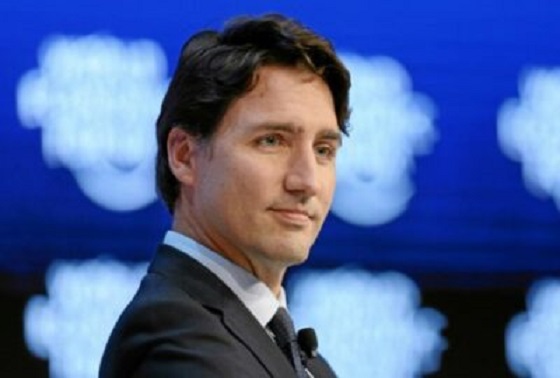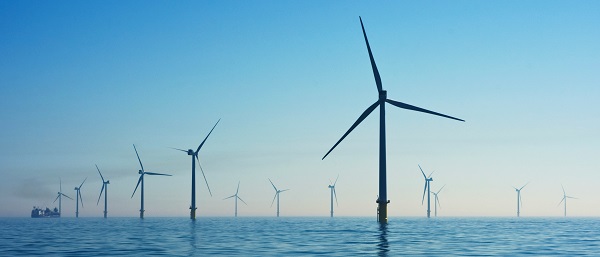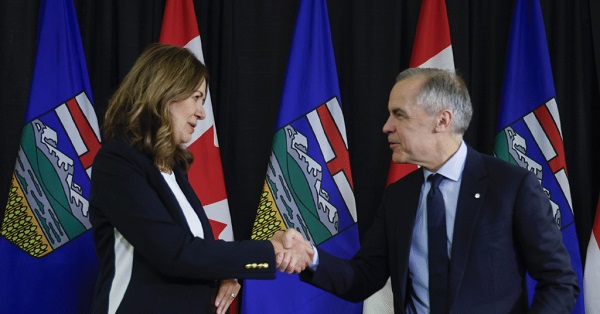Energy
Canadian Gas Association Writes a Letter to Prime Minister Justin Trudeau Highlighting the Importance of Natural Gas Energy Choice for Canadians

From EnergyNow.ca
On January 29, 2024, the Canadian Gas Association (CGA) sent a letter to Prime Minister Justin Trudeau, emphasizing the significance of the natural gas energy option for Canadians, a need underscored by the recent severe weather conditions in Western Canada.
The letter reads as follows:
Canada’s energy delivery companies had their work cut out for them over the last few weeks, ensuring the country could get through a period of extreme cold temperatures. The polar vortex that locked in across the continent only underscored how important an energy system with many options is to our overall well-being. I thought I would expand on this point in my first letter to you in 2024.
The second week of January saw temperatures in parts of the country drop well into the minus 40s, with windchill in the minus 50s. This triggered alerts from various authorities to reduce electricity use. Around 4 pm in Alberta on January 12th wind and solar generation facilities were operating at only a few percentage points of their capacity. But power was desperately needed. Luckily, a combination of in-province and neighbouring jurisdiction power sources – like natural gas-powered plants – could help meet the power needs of the province.
It is worth drawing attention to the fact that the alerts were all about a single energy system – the electricity grid. While that grid was under strain due in part to low renewable energy generation availability, the natural gas delivery system (a separate system that delivers gas energy, not electrons) was delivering approximately 9 times the energy and operating without any alerts required.
The contribution of the gas system is really worth emphasizing.
Nationally, over an average year, electricity meets just over 20% of our energy needs. Natural gas directly delivered to customers – residential, commercial and industrial – meets almost twice that amount, or just under 40% and liquid fuels like gasoline and diesel meet the balance. But at certain times of the year, such as during the recent January freeze, the differential between what natural gas and electricity deliver grows dramatically. At points earlier this month Alberta had use of roughly 12,000 megawatts of electric power and over 110,000 megawatts of gas energy equivalent.
And yet it was the electric system, not the natural gas system, that was threatened.
Media coverage during and after the freeze referenced how the electric system is threatened by extreme weather and needs to be built out to meet demand. But to suggest that the electric system could ever meet the energy delivered by natural gas over the gas delivery system is simply unrealistic. Do those who advocate for the electrification of all energy, especially peak heating needs, pretend that we have either the means, the resources, or the dollars, to build out an electric system that could meet roughly nine times the load of the gas system? Do advocates of natural gas bans appreciate that banning natural gas power generation would leave us in situations of actual shortage – a terrifying spectacle in the event of minus 50 degree weather?
Again, the point here is to underscore the value proposition of natural gas and the infrastructure that delivers it: the reliability these provide is extraordinarily important. This value is particularly well demonstrated when severe weather – a Canadian reality – hits us. We have to stop talking about eliminating the choice of energy options like natural gas, and relying exclusively on one energy delivery system, like electricity. Each delivery system has its own advantages, and natural gas is particularly well suited to meet heating needs. That should never be overlooked, as this month’s weather events reminded us.
Prime Minister, when it comes to energy – in supply options, and in delivery systems – diversity truly is our strength in Canada. We must maintain natural gas as an option for reliability, for affordability, and for sustainability – all of which are essential for our country’s energy security and the wellbeing of the Canadian consumer.
Respectfully,
Timothy M. Egan
President and CEO, Canadian Gas Association
Chair, NGIF Capital Corporation
About CGA
The Canadian Gas Association (CGA) is the voice of Canada’s gaseous energy delivery industry, including natural gas, renewable natural gas (RNG) and hydrogen. CGA membership includes energy distribution and transmission companies, equipment manufacturers, and suppliers of goods and services to the industry. CGA’s utility members are Canadian-owned and active in eight provinces and one territory. The Canadian natural gas delivery industry meets 38 per cent of Canada’s energy needs through a network of almost 584,000 kilometers of underground infrastructure. The versatility and resiliency of this infrastructure allows it to deliver an ever-changing gas supply mix to 7.6 million customer locations representing approximately two-thirds of Canadians. CGA members ensure Canadians get the affordable, reliable, clean gaseous energy they want and need. CGA is also working to constantly improve that gaseous energy offering, by driving forward innovation through the Natural Gas Innovation Fund (NGIF).
SOURCE Canadian Gas Association
Daily Caller
US Halts Construction of Five Offshore Wind Projects Due To National Security


From the Daily Caller News Foundation
Interior Secretary Doug Burgum leveled the Trump administration’s latest broadside at the struggling U.S. offshore wind industry on Monday, ordering an immediate suspension of activities at the five big wind projects currently in development.
“Today we’re sending notifications to the five large offshore wind projects that are under construction that their leases will be suspended due to national security concerns,” Burgum told Fox Business host Maria Bartiromo. “During this time of suspension, we’ll work with the companies to try to find a mitigation. But we completed the work that President Trump has asked us to do. The Department of War has come back conclusively that the issues related to these large offshore wind programs have created radar interference that creates a genuine risk for the U.S.”
Predictably, reaction to Burgum’s order was immediate, with opponents of offshore wind praising the move, and industry supporters slamming it. In Semafor’s energy-related newsletter on Tuesday, energy and climate editor Tim McDowell quotes an unnamed ex-Energy Department official as claiming, “the Pentagon and intelligence services, which are normally sensitive to even extremely low-probability risks, never flagged this as a concern previously.” (RELATED: Trump Admin Orders Offshore Wind Farm Pauses Over ‘National Security Risks’)
Yet, a simple 30-second Google search finds a wealth of articles going back to as early as October 2014 discussing ways to mitigate the long-ago identified issue of interference with air defense radars by these enormous windmills, some of which are taller than the Eiffel Tower. It is a simple fact that the issue was repeatedly raised during the Biden Administration’s mad rush to speed these giant windmill operations into the construction phase by cutting corners in the permitting process.
In May, 2024, the Bureau of Ocean Energy Management’s (BOEM) own analysis related to the Atlantic Shores South project contains a detailed discussion of the potential impacts and suggests multiple ways to mitigate for them. An Oct. 29, 2024 memo of understanding between BOEM and the Biden Department of Defense calls for increased collaboration between the two departments as a response to concerns from members of Congress and others related to these very long-known potential impacts.
The Georgia Tech Research Institute published a study dated June 6, 2022 detailing “Radar Impacts, Potential Mitigation, from Offshore Wind Turbines.” That study was in fact commissioned by the National Academies of Sciences, Engineering, and Medicine (NASEM), a private non-profit that functions as an advisory group to the federal government.
Oh.
A report published in February 2024 by International Defense Security & Technology, Inc. describes the known issues thusly:
“Wind turbines can create clutter on radar screens in a number of ways. First, the metal towers and blades of wind turbines can reflect radar signals. This can create false returns on radar screens, which can make it difficult to detect and track real targets.
“Second, the rotating blades of wind turbines can create a Doppler effect on radar signals. This can cause real targets to appear to be moving at different speeds than they actually are. This can also make it difficult to track real targets.”
The simple Google search I conducted returns hundreds of articles dating all the way back to 2006 related to this long-known yet unresolved issue that could present a very real threat to national security. The fact that the Biden administration, in its religious zeal to speed these enormous offshore industrial projects into the construction phase, chose to downplay and ignore this threat in no way obligates his successor in office to commit the same dereliction of duty.
Some wind proponents are cynically raising concerns that a future Democratic administration could use this example as justification for cancelling oil and gas projects. It’s as if they’ve all forgotten about the previous four years of the Autopen presidency, which featured Joe Biden’s Day 1 order cancelling the 80% completed Keystone XL pipeline, a year-long moratorium on LNG export permitting, an attempt to set aside more than 200 million acres of the U.S. offshore from future leasing, and too many other destructive moves to detail here.
Again, a simple web search reveals that experts all over the world believe this is a real problem. If so, it needs to be addressed as a matter of national security. Burgum is intent on doing that. All half-baked talking points aside, this really isn’t complicated.
David Blackmon is an energy writer and consultant based in Texas. He spent 40 years in the oil and gas business, where he specialized in public policy and communications.
Energy
While Western Nations Cling to Energy Transition, Pragmatic Nations Produce Energy and Wealth


From the Daily Caller News Foundation
History will likely remember 2025 as the year energy corporatists finally stopped pretending there is a climate crisis. For a decade, a bizarre theater of the absurd played out as titans of the oil and gas industry apologized for their core business while pledging allegiance to a “green transition” that existed mostly in the imaginations of Western bureaucrats. But the curtain has seemingly fallen.
ExxonMobil, one of the world’s largest energy producers, has slashed $10 billion from its low-carbon investment commitments through 2030. Simultaneously, the company announced that it expects $25 billion in earnings growth from 2024 to 2030 to be powered primarily by increases in oil and gas production, which will push daily output to 5.5 million barrels of oil equivalent by the end of the decade.
This is not a company abandoning climate responsibility but rather at last recognizing what has long been obvious: The path prescribed by the climate industrial complex is economically destructive and operationally impossible – even with massive government subsidies.
Dear Readers:
As a nonprofit, we are dependent on the generosity of our readers.
Please consider making a small donation of any amount here.
Thank you!
For years, the global energy strategy has been surreal. Companies that built the modern world on the back of energy-dense hydrocarbons indulged those celebrating the arrival of wind turbines and solar panels to power civilization. But reality, stubborn and unforgiving, has interrupted the psychedelic revelry.
ExxonMobil’s low-carbon investments will be paced to policy support and customer demand, says the company. That is corporate speak meaning that spending on green projects is paused unless the government – using our tax dollars – subsidizes the risk or until a market exists.
Megaprojects, once heralded as the future, are now in line for deferral. Why? Because without taxpayer handouts, the economics of trying to bury underground a plant food like carbon dioxide simply do not work – and defy common sense.
The energy sector is pivoting from a strategy of “grow clean at all costs” to “returns first, transition last.” “Green” projects are being relegated to a secondary capital bucket – a token for good PR instead of a core activity.
Europe’s Shell and Aker BP and Canada’s Enbridge have withdrawn from the Science Based Targets initiative to establish “science-based emissions reductions.” This was a retreat from what is described as a “credible, science-based net-zero framework” because there was neither credibility nor science. It was a political suicide pact. The energy giants looked at the cliff’s edge and refused to jump.
British multinational BP, having abandoned its promise to go “Beyond Petroleum,” has raised its oil and gas spending and softened its renewable targets.
ENEOS Holdings, a Japanese refiner, has discarded hydrogen production targets, with CEO Tomohide Miyata explaining that “the shift toward a carbon-neutral society appears to be slowing.”
These U-turns represent a renaissance in policy realism. Energy needs do not disappear because politicians make speeches at climate summits or corporations allocate funds to ESG programs or governments attempt to control consumption and choices of appliances and automobiles.
Second thoughts about an inevitably doomed “green” transition is a victory for the single mother in the U.S. trying to budget for winter heating and for the small business owner in the U.K. whose margins are crushed by one of the highest commercial electricity rates in the world. And for the billions of people in developing nations, this pivot could be salvation from generational poverty.
The question now is whether governments will recognize what corporations have made clear: that the energy transition was a fantasy infused with scientific language and draped in moralistic gingerbread. Or will they continue to increase subsidies and regulations?
Very likely, there will be a bifurcation: on the one hand, western bureaucracies, particularly in Europe, continuing an economic decline under mandates and taxes, and on the other, pragmatic governments, many of them in Asia, pursuing prosperity with fuels and technologies that work.
Vijay Jayaraj is a Science and Research Associate at the CO2 Coalition, Fairfax, Va. He holds an M.S. in environmental sciences from the University of East Anglia and a postgraduate degree in energy management from Robert Gordon University, both in the U.K., and a bachelor’s in engineering from Anna University, India. He served as a research associate with the Changing Oceans Research Unit at University of British Columbia, Canada.
-

 Energy2 days ago
Energy2 days agoThe Top News Stories That Shaped Canadian Energy in 2025 and Will Continue to Shape Canadian Energy in 2026
-

 Frontier Centre for Public Policy23 hours ago
Frontier Centre for Public Policy23 hours agoTent Cities Were Rare Five Years Ago. Now They’re Everywhere
-

 International2 days ago
International2 days ago$2.6 million raised for man who wrestled shotgun from Bondi Beach terrorist
-

 Alberta2 days ago
Alberta2 days agoOttawa-Alberta agreement may produce oligopoly in the oilsands
-

 Fraser Institute8 hours ago
Fraser Institute8 hours agoCarney government sowing seeds for corruption in Ottawa
-

 International7 hours ago
International7 hours agoNo peace on earth for ISIS: Trump orders Christmas strikes after Christian massacres
-

 Daily Caller7 hours ago
Daily Caller7 hours agoUS Halts Construction of Five Offshore Wind Projects Due To National Security
-

 Opinion24 hours ago
Opinion24 hours agoPope Leo XIV’s Christmas night homily



